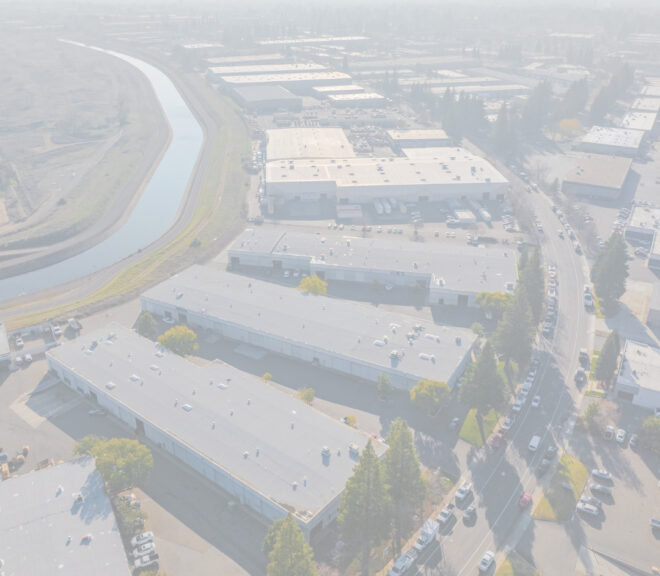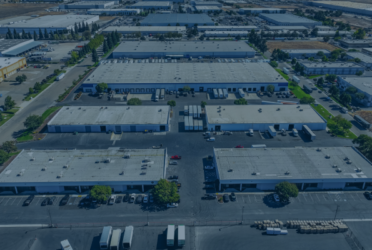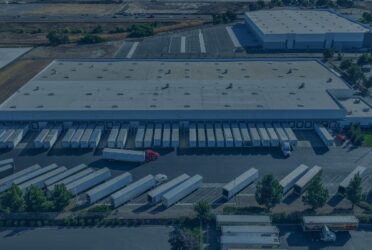Commercial vs. Industrial Real Estate

1 Commercial vs. Industrial Real Estate
1.1 What is Commercial Real Estate?
1.2 What is Industrial Real Estate?
1.3 Does Commercial Real Estate Include Industrial?
1.4 What Does it Mean if Something is Zoned Industrial?
1.4.1 Commercial vs. Industrial Zoning
1.4.2 Types of Industrial Zoning
1.4.3 Industrial zoning permitted uses
1.4.4 Industrial Zoning Building Codes
Industrial property, despite being around for more than 100+ years, has only recently come into focus as an area of opportunity for commercial real estate investors. Industrial real estate is now one of the hottest commercial property subtypes, and a sector that is expected to generate tremendous returns for investors over both the short- and long-term horizon.
That said, industrial is a niche that few people truly understand well. In this article, we look at some of the key characteristics of industrial real estate, including the property types and uses allowed under most industrial zoning codes.
What is Commercial Real Estate?
Commercial real estate is a catch-all term for income-generating property of all kinds. Commercial real estate can include, but is not limited to: multifamily apartment buildings, office buildings, hospitality properties, retail, and industrial.
There are many niche property types that fall within each of these categories. For example, student and seniors housing are two subsets of the multifamily sector. Office buildings can be further subdivided to include things like medical office buildings.
Raw land may also be considered commercial real estate, depending on how that property is zoned (more on this below). Land development is a complex process that can result in many commercial real estate building types.
What is Industrial Real Estate?
Industrial real estate is a specific type of commercial property that is especially vital to the nation’s economy. Industrial property can be broadly defined as all land and buildings that accommodate industrial activities, including production, manufacturing, assembly, warehousing, research, storage and distribution of consumer goods.
While most people tend to associate industrial real estate with the large, brick smokestack buildings constructed in the late 1800s, industrial property is actually much more diverse. It includes both light and heavy manufacturing, warehouse space, distribution centers (large and small), logistics facilities, “flex” space that includes some combination of industrial and other uses (usually office and/or retail), showrooms, self-storage facilities and more.
The characteristics of industrial real estate can vary depending on the property’s use, but in general, an industrial building will feature high ceilings, strong floors, and multiple loading docks that allow for goods to be loaded and unloaded with ease.
Industrial properties have historically been located on the outskirts of major residential areas, as these uses have been thought of as a nuisance to abutters. For example, those living in single-family homes do not want to be disturbed by large trucks or heavy machinery operating at all hours of the night. As such, industrial property requires specific zoning to allow for these activities to occur.
With the uptick in e-commerce and retailers moving toward more direct-to-consumer business models, demand for industrial properties has reached an all-time high. In response, investors, large and small alike, are adding industrial real estate to their portfolios with rapid speed.
Does Commercial Real Estate Include Industrial?
Yes, commercial real estate includes industrial property. Industrial property is one of the four major commercial real estate “buckets”. The other three major commercial property types are office, multifamily and retail.
Manufacturing, warehousing, distribution and logistics centers are all types of industrial property and by extension, should be considered commercial real estate. Self-storage and cold storage are two other types of industrial uses that are categorized as commercial real estate.
Heavy manufacturing facilities are the most likely to be owner-occupied. These businesses are producing something, often with heavy equipment in a purpose-built facility that the business intends to occupy for the long term.
Therefore, from an investment perspective, most income-generating industrial real estate leans towards warehousing, storage, distribution and other logistics facilities. This type of industrial real estate can range in size, from 10,000 square feet to 1,000,000 square feet or more. The properties may be leased to a single tenant or multiple tenants, depending on the building layout and the owner’s investment strategy. Tenants can also range from locally-oriented businesses (e.g., an auto repair shop or CrossFit studio) to large national tenants (e.g., Amazon or Walmart distribution centers).
What Does it Mean if Something is Zoned Industrial?
There are a few primary differences between property that is zoned for commercial use (broadly) and industrial use (more specifically). As noted above, people tend to associate industrial with nuisance activity, such as loud trucks entering and exiting a property at all hours of the night and loud, sometimes pollution-generating machinery operating on and around the site. This has caused many cities and towns to adopt industrial zoning, which indicates that industrial activity can only occur on those properties zoned accordingly.
In reality, industrial uses are not as noxious as they once were. In fact, many industrial properties are clean, highly efficient, and as sustainable as other modern commercial buildings. That said, there are still zoning ordinances that need to be followed.
Below is an overview of industrial zoning.
Commercial vs. Industrial Zoning
The primary differences between commercial and industrial zoning tend to be around lot size, setback requirements, noise, parking, and environmental considerations.
Commercial zoning tends to be more prevalent and allows for any business operations to occur within those properties as long as they meet certain criteria (e.g., manufacturing activities may be prohibited).
Industrial zoning will often require lot sizes to be larger than they would otherwise need to be in general business districts. This provides more breathing room for industrial activity to occur, with more distance between the business operations and neighbors. Industrial developers will want to be sure the property they are acquiring has sufficient lot area to accommodate the size and scale of the building they have in mind.
Setback requirements are another consideration and are tangentially related to lot size. An industrial building will usually need to have more significant setbacks (e.g., the distance between the building and the property line) than commercial buildings. Again, this is to provide sufficient distance between the (perceived) nuisance uses and the neighbors. Wider setbacks are also used to ensure the property has sufficient area around the building to accommodate heavy machinery and truck traffic, as well as any utility lines or other infrastructure improvements that may be needed at the industrial site.
Noise is a key consideration for any municipality weighing whether or not to zone a property as industrial land. Industrial is often prohibited near residential areas given concerns over noise. This is especially true for buildings that have large rooftop mechanical systems, heavy machinery, or will require significant truck traffic. The zoning may require a cease of industrial business operations during certain overnight hours to provide relief for residents living nearby.
The amount and siting of parking is also a key consideration for industrial sites. Zoning may require a certain number of parking spaces per 1,000 square feet of industrial space. This number may go up or down depending on the type of industrial activity. For example, a warehousing or distribution center may need very few parking spaces for employees, but the size of the parking spaces may need to be larger to accommodate the commercial box trucks arriving to and from the site, especially if any of those vehicles are parked overnight.
Each municipality has its own zoning code and may define types of industrial zoning differently. Therefore, it is important for any industrial investor to understand the local zoning to see which types of industrial buildings are allowed at a property under existing zoning, and which are allowed by-right vs. through a special permit process.
In general, however, the broad types of industrial zoning include: dry cleaning or laundry services, data center, manufacturing (heavy or light), moving and/or self-storage, recycling collection/transfer stations, salvage yards, trucking and transportation depots, and wholesale trade or distribution centers.
Depending on the geography, there might be a separate industrial category called “marina” which is a site used for docking, storage and/or repair of boats while in the water. Sometimes, these marina sites will also be permitted to have ancillary, long-term dry storage for recreational watercraft including boats, jet skis and other water-based vehicles.
Industrial zoning permitted uses
Industrial zoning permitted uses generally align with the types of industrial zoning outlined above. Permitted uses may include:
Dry cleaning or laundry services: these are uses that provide centralized dry cleaning or laundry services for other industrial, commercial or business establishments.
Data Center: uses that provide information storage and processing services to other businesses or end users through a collection of computer services and related information technology infrastructure.
Manufacturing: The processing, assembly, treatment, or packaging of mass-produced finished parts or products primarily through automation, mechanization, or assembly line processes. Typical manufacturing uses include electronics and electrical equipment assembly, food and beverage processing and packaging, and the production of parts and sub-assemblies for other products. Operations may include the storage of materials and the loading/unloading of new materials and finished products.
Showrooms and the ancillary sales of goods are usually prohibited on sites zoned for manufacturing use. The production or use of hazardous or explosive material may only be required through a separate permitting process.
Moving or Storage Services: These are uses engaged in the moving of household or office furniture, appliances and equipment from one location to another, including the temporary storage of those items. This may include self-storage and mini-storage warehouses.
Trucking or Transportation Uses: These are businesses that are engaged in the dispatching and short- or long-term storage of large vehicles. Minor repair and maintenance of vehicles may also be allowed, depending on the municipality.
A municipality may request additional information, for example, about the capacity of the local thoroughfare network to provide access to the site, and the impact that truck traffic would have on pedestrian, bicycle or vehicular circulation in the neighborhood. The municipality may also request information about vehicle site lines needed to enter and exit the site, as well as the visual impact and quality of the screening for parked business vehicles.
Wholesale Trade or Distribution: These are business uses engaged in the wholesale collection, sorting, processing and distribution of bulk mail, packages, or commercial goods, storage, processing, and distribution of bulk goods including but not limited to furniture; professional and commercial equipment; electrical goods; hardware, plumbing and heating goods; paper and plastic products; apparel; food and beverages; healthcare equipment and supplies; and any other goods needed to sustain commercial activity (whether that be commercial, retail, or other industrial businesses).
Again, depending on the local municipality, ancillary retail sales and/or wholesale showrooms may or may not be permitted uses. Activities that include physical assembling, sorting and grading goods from large lots into smaller lots may be allowed, as long as the processes used have minimal impact on abutting property owners.
In short, the range of industrial uses permitted on industrially-zoned land can vary widely from one municipality to another. It is important to understand the local zoning code to ensure the businesses you are targeting will be allowed either by-right or by special permit on the site under consideration.
Industrial Zoning Building Codes
Like industrial zoning, the building codes for industrial property can vary from one jurisdiction to the next. In general, most industrial building codes will have regulations pertaining to the number and means of egress required, fire suppression systems (e.g., sprinkler systems), minimum floor heights, and the degree to which the interior spaces must be finished.
Is Industrial-Zoned Land Worth More Than Residential?
Historically, residential property was considered more valuable on a per square foot basis than industrial property. This is especially true given rent levels, which tend to be higher for residential property than industrial.
However, the value of industrial vs. residential land is highly market-specific and will depend on the type of industrial activity occurring on that site.
For example, in a remote area where land values as low, the value of a large regional distribution center may be worth more than a similarly-sized adjacent property that has been zoned for residential use. In this case, there may be more demand in that market for industrial warehousing or distribution than there is for significant residential development. After all, there are only so many areas that have 50+ acres of land needed to transform a parcel into a large distribution center. These sites, if otherwise well-located for a business’s needs, often attract the attention of well-heeled institutional investors looking to add industrial to their portfolios.
Once again, market context matters. Multifamily cap rates have ranged from 3-6% in recent years, with industrial properties trading at slightly higher yields. However, the best located industrial properties are now being sold at sub-3% cap rates in some markets (e.g., in the port areas in and around Los Angeles).
Industrial may have been an overlooked asset class in decades past—but that is certainly no longer the case today. Demand for industrial is at an all-time high, making it one of the most attractive commercial real estate property types. COVID has only accelerated demand for industrial real estate, as more people have become comfortable with shopping online. In fact, many experts argue that the outlook for industrial real estate will be brighter than that of either office or retail in the years to come.
Are you interested in investing in industrial property? Contact us to learn about our approach strategy around industrial real estate investments.










 Podcast
Podcast